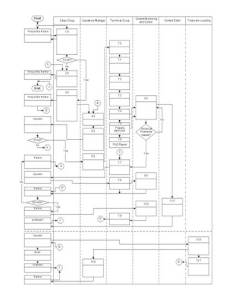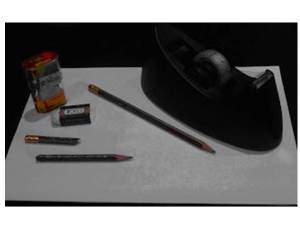By:
Efren Alvarez Galapon
Manager, Corporate Qualtiy, Health & Safety, Environment
Mobile Business Company Ltd. (MBUZZ)
Riyadh, Saudi Arabia
Mobile: +966 54 805 46 15
Email: efren.a.galapon@iodynamics.org efren.a.galapon@gmail.com
The human mind is a huge and practically limitless receptacle of any imaginable objects. It is a storehouse of knowledge and secrets.
Knowledge can be shared at will; or, at certain circumstances, can be sieved by means of coercion; and it can be kept forever by its owner.
There is, however, a way of capturing specific contents of the human mind in such a manner that it does not offend somebody or intrude someone’s privacy.
Figure 1 shows a photograph of actual patches of paper in which an idea or knowledge about the work flow of a business operation stored in an operations manager’s mind is captured by this author in his capacity as a management analyst. Up to this point, however, the operations manager and the management analyst are the only two persons who have the most holistic view of the entire operations of that business unit of the company.
The aim of the undertaking is to capture the flow of workmanship aimed at sharing the knowledge and information to all stakeholders in the organization.
Figure 2 shows a more sensible structured work flow derived from the raw information in Figure 1 but still remains in the mind of the management analyst alone. It has to be put into proper perspective in such a way that it can be understood by others.
Figure 3 is the draft process flow derived from Figure 2. This is the ultimate objective of the management analyst. Once the document is reviewed and confirmed by the operations manager (process owner) a specific knowledge is captured from its keeper and is shared with everyone in the organization.
The method or technique used in such a task has many labels. Two of the most popular terms used are: “mind mapping” and “flowcharting.” In project management circles, it is called “network diagramming”; in MBA courses, it is called “block diagramming” (Figure 3 is an example); others call it “cross-functional/horizontal flowchart.”
Block diagrams or flowcharts like the one shown in Figure 3 are snapshots of specific knowledge kept in someone’s mind. Flowcharting is an effective universal tool in capturing such contents of the mind—it is generic and standard, i.e., it can be used by anyone anywhere else and it gives the same results. The components are few and simple: a rectangle (represents a process); an arrow (shows directions); a decision box (prompts an “either”/ “or” action); the rest are supplementary.
Flowcharts also show what goes on inside a process as shown in Figure 3. A cross-functional process flow identifies functional units (the individual columns) of an organization that are called to work inside a given process environment. Each box inside a process flowchart is linked directly or indirectly to one another. Each box represents a human activity and the brief description is enough to comprehend what goes on inside a specific box. Each column identifies a responsible person whose job/task is defined by each box within his column of responsibility.
To succeed in capturing a truly representative process flowchart a few requirements is needed.
Tools and Materials. This author usually uses five materials: pencil, pencil sharpener, eraser, a few pieces of A4-size paper, and a scotch tape (Figure 4 shows the materials this author used in coming up with Figures 1 and 2.)
Environment. You must bring your subject (the source of knowledge) in a quite place (like your conference room or the room of an executive) in which he/she feels comfortable and relaxed. Once the session has started, there should be no distraction.
Skills. The primary soft skill required is high level of maturity on the part of the management analyst—he should be perceived as trustworthy to whom secrets can be disclosed. Another is listening skill which requires 98% listening (eye contact, nodding, brief affirmative words, like, “yes”) and 2% talking (this is used in prodding the subject with some questions). Ability to summarize what is said by the subject coupled with an ability to capture/write them in paper as quick as possible—you do not want to interrupt the subject when he has started talking; just keep writing while he is talking; it also shows that you are interested with what is being said. You do not need to bring with you a voice recorder—your subject will become suspicious with it; you better learn how to write shorthand (steno) in that way, you can capture more words than writing the usual way.
Yes, capturing specific contents of the human mind and putting them into proper perspective for many to understand is possible—the technique of which can be learned by anyone.








Pingback: How To Capture Specific Contents Of The Human Mind Then Put Them Into Proper Perspective | Industrial / Organizational Dynamics
How can i contact you to inquire further about your work?
LikeLike